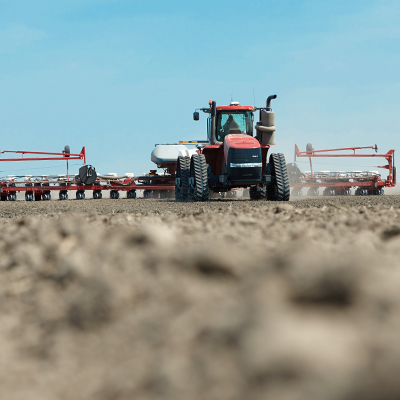Harold Reetz: Looking Back, Looking Ahead
Having just retired from 28 years with the Potash & Phosphate Institute (PPI) and the International Plant Nutrition Institute (IPNI), preceded by 12 years at Purdue University, I have been reflecting on what we have accomplished in the past 40 years. We have made progress yet have been disappointed by unmet goals.
As I completed my first crop season as Extension corn production specialist at Purdue (1975), I was feeling pretty good about producing my first corn yield over 200 bushels per acre (bu/A). Then I learned about a Saybrook, IL, farmer named Herman Warsaw and his world record yield of 338 bu/A. That was a real wake-up call.
I realized that in order to build a credible corn production program, I needed to learn how to grow higher yields. Teaming up with Purdue colleagues, and particularly with Werner Nelson, then vice president of PPI, we started studying Warsaw’s program along with other high yield producers.
When I joined the PPI staff a few years later, I was able to work with Warsaw more closely, along with University of Illinois researchers Bob Lambert, Dr. Fred Welsh, and Dick Hageman to try to learn what was unique about Warsaw’s system. I had the pleasure of riding the combine with Herman in 1985 as he harvested a new world-record corn yield of 370 bu/A. Now, 25 years later, contest yields more than 300 bu/A are common, and many central Illinois farmers routinely produce field over 200 bu/A.
How did this progress come about? Genetic improvement has had a major impact. Recently, insect resistance and more aggressive root systems have helped improve water and nutrient use efficiency. Coupled with higher populations and general sharpening of management, farmers have learned how to take advantage of the improved genetic potential.
Lagging Soybeans
Progress with soybean yield has not been as good over the past 40 years. But have we really tried as hard? Midwest farmers tend to put corn first; soybeans get the leftovers — in nutrition, in management, in priority for improvement. That has changed in some cases, and some good progress is being made. Fortunately the best growing conditions and management for corn work pretty well for soybeans. But the future demands for improving production of both crops will require us to fine-tune the management systems and focus more on the unique requirements of each crop. With the diversity being incorporated with genetic engineering, we will likely even make additional adjustments to the management system to fit individual varieties/hybrids.
The margin for improvement in soybeans appears to be greater than in corn, based on the differential between record yields and average ones. Keeping the majority of flowers on the plant to develop grain is a challenge.
Realizing the potential yield of new genotypes will require sharpening other management factors. Best yields require systematic elimination of yield-limiting factors. Nutrients must be available in the right form and the right amount at all times … and the right amount varies throughout the season. Plant spacing — both row width and spacing within the row — becomes more critical in higher yielding systems. Elimination of stress and competition from diseases, insects, weeds, and other pests becomes more critical. Amount and timing of water availability have much more impact on high yield systems, as does the requirement for adequate drainage.
High yield management also will show more response to site-specific precision farming technology, as it helps to fine-tune the management to deal with the within-field variability in soils, topography, and other chemical and physical factors.
A correlated need for all of this will be the need for more agronomic information and advisers to deliver and interpret it. Future farmers need more help keeping up with the details. There is a serious concern — are we are training enough new agronomists to fill that need? And the continuing education to keep these advisers up to date will be another challenge. On-farm research will benefit every farm to help adjust management practices to best fit the local situation. More detailed databases for the farm built from accumulated years of records also become a more valuable resource.
I look back on the last 40 years of progress with pride in what we have accomplished, but look ahead to even greater challenges. I have faith that we have the determination to work to meet these challenges head-on. But I am concerned that we must maintain the research, teaching, and Extension systems in universities and industry to provide the science technology and the human resources that are required. I look forward to continuing to help make it happen.





